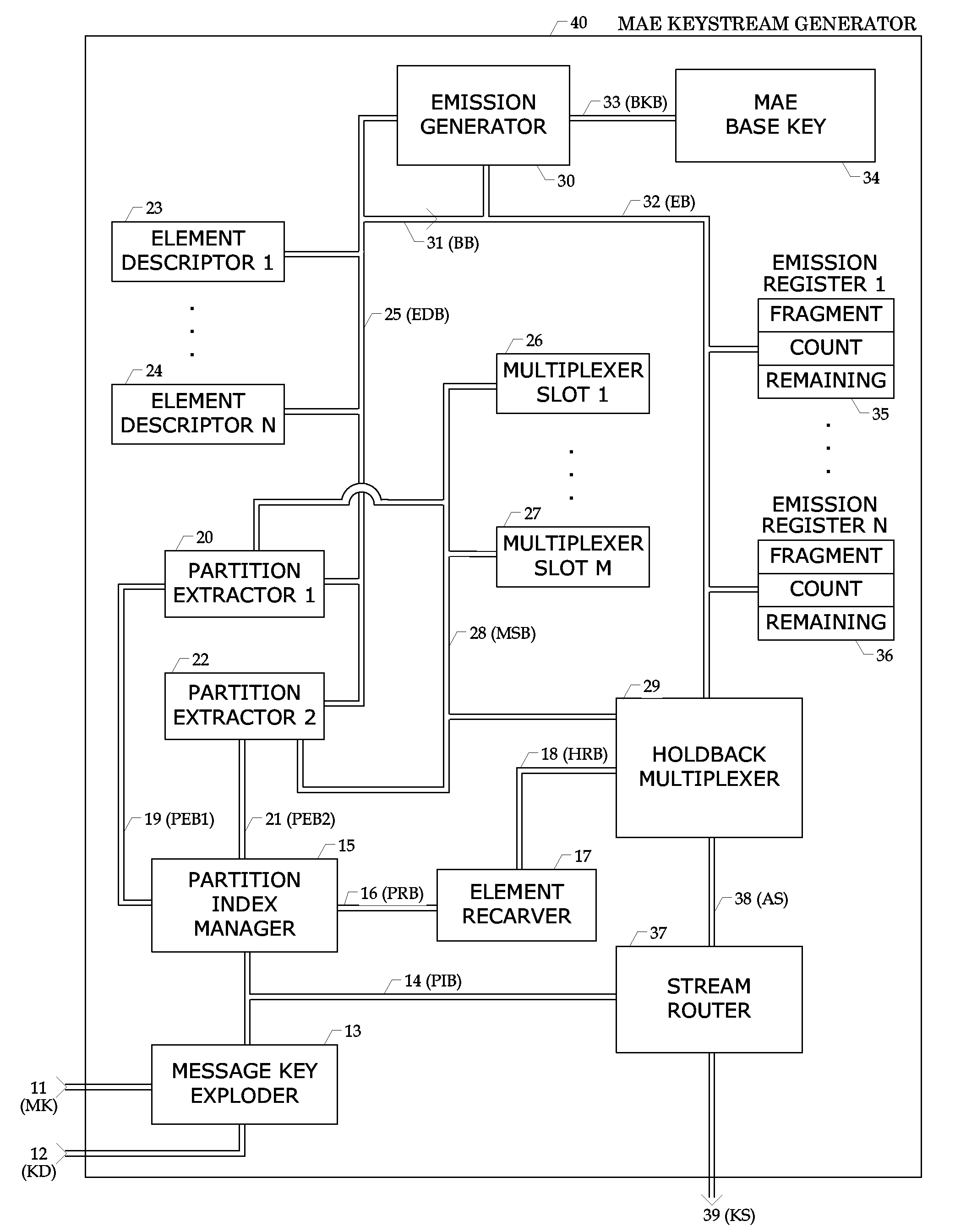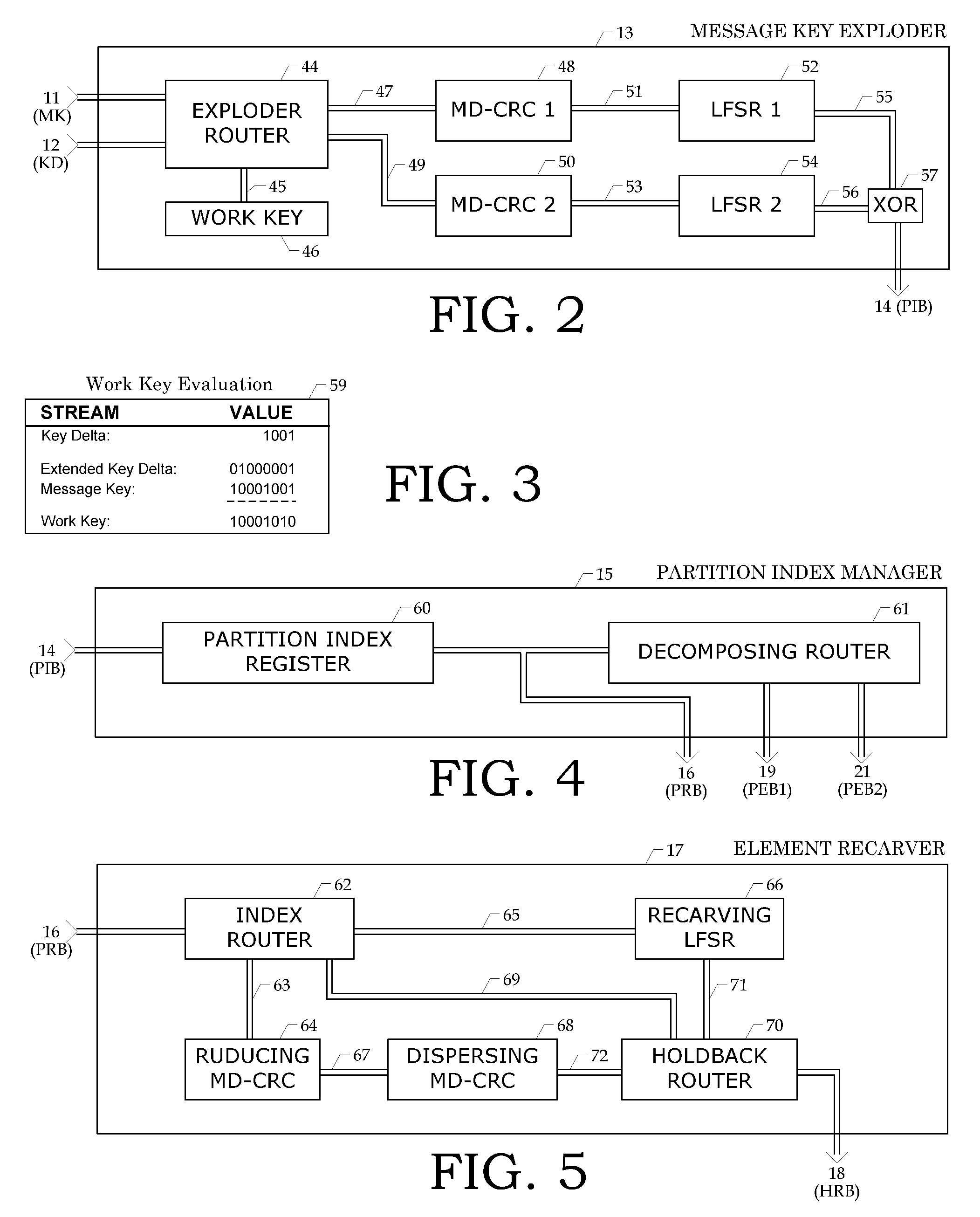Monobase amorphous encryption
a cryptographic key and monobase technology, applied in the field of cryptographic machines and processes, can solve the problems of poor memory utilization, insecure cryptographic representation of many lfsr based configurations, and computational inefficiency of processes, and achieve the effects of improving the security of the generated keystream, improving the hash rate, and simplifying the operation
- Summary
- Abstract
- Description
- Claims
- Application Information
AI Technical Summary
Benefits of technology
Problems solved by technology
Method used
Image
Examples
Embodiment Construction
[0080] 1. Overview of Monobase / Morphing Amorphous Encryption Embodiments
[0081] The expanding amorphous process is the basis for the present invention, which has two primary versions that differ in base key usage. The first version uses a single (mono) base key while the other uses a morphing base key. The overloaded acronym MAE refers to both versions, and the innovations described herein are generally applicable to both versions. However, some innovations are more apt than others for specific embodiments as will be described in due order.
[0082] The mapping and multiplexing techniques that comprise MAE lend themselves as design parameters so that various implementations based on tradeoffs of speed, size, format, and security level are readily possible. For example, some techniques require more processing power. Hence within a software implementation, the basic techniques could be used in a level 1 system with more process intensive techniques used in a more secure level 2 system. ...
PUM
 Login to View More
Login to View More Abstract
Description
Claims
Application Information
 Login to View More
Login to View More - R&D
- Intellectual Property
- Life Sciences
- Materials
- Tech Scout
- Unparalleled Data Quality
- Higher Quality Content
- 60% Fewer Hallucinations
Browse by: Latest US Patents, China's latest patents, Technical Efficacy Thesaurus, Application Domain, Technology Topic, Popular Technical Reports.
© 2025 PatSnap. All rights reserved.Legal|Privacy policy|Modern Slavery Act Transparency Statement|Sitemap|About US| Contact US: help@patsnap.com



